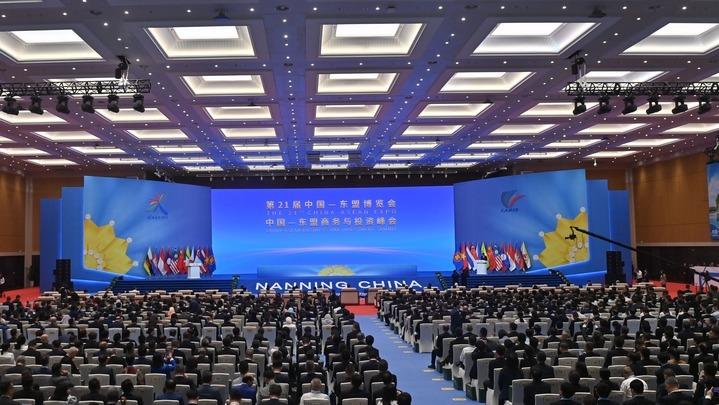NANNING, Sept. 24 (Xinhua) -- The constantly growing economic cooperation between China and the Association of Southeast Asian Nations (ASEAN) is set to further stabilize and inject vitality into the volatile global economy challenged by protectionism and deglobalization.
Bilateral trade between China and ASEAN reflects this robust cooperation. Official data showed that in the first seven months of this year, their trade reached 552 billion U.S. dollars, up 7.7 percent year on year, accounting for about one-sixth of China's total foreign trade volume in the same period.
China has remained ASEAN's largest trading partner for 15 consecutive years, while ASEAN has been China's top trading partner for four consecutive years. These figures demonstrate a shared vision of creating a massive integrated market, optimizing resource allocation, and leveraging each other's strengths for mutual benefit.
The China-ASEAN Free Trade Agreement and the Regional Comprehensive Economic Partnership, the latter being the largest trade pact in the world, have enhanced trade and investment liberalization and facilitation between the two sides.
Such key trade agreements have also fast-tracked the integration of industrial and supply chains, fostering greater interdependence and mutual gains.
The deepening cooperation is further exemplified through multilateral events like the annual China-ASEAN Expo, which offers great opportunities for shared growth.
Scheduled for Sept. 24 to 28 in Nanning, the capital of south China's Guangxi Zhuang Autonomous Region, the 21st session of the expo has attracted over 3,000 enterprises to its nearly 200,000 square meters of exhibition space.
Since its inception in 2004, the event has grown into a vital platform for promoting the free flow of goods between China and ASEAN, making it easier for products like Thai fragrant rice, Vietnamese coffee, Malaysian Musang King durians and Laotian beer to please the palates of Chinese consumers.
China and the ASEAN region have been among the most dynamic economies in the world, generating strong momentum for global growth. In 2023, ASEAN achieved 4.1 percent economic growth, a trajectory expected to persist thanks to robust fundamental elements. Growth forecasts for ASEAN economies are 4.6 percent in 2024 and 4.7 percent in 2025, which are set to surpass estimated global averages.
China continues to play a pivotal role in global economic growth. Over the past decade, China's share of the world economy has increased from 12.3 percent to over 18 percent, with its annual contribution to global growth averaging over 30 percent.
ASEAN countries contribute 10 percent to global growth, more than double their weight in the world economy, as IMF Managing Director Kristalina Georgieva noted at the 43rd ASEAN Summit.
The sustained economic ties between China and ASEAN act as a counterbalance to the rising protectionism seen among other major global economies, underscoring the importance of their partnership as a ballast in the turbulent world.
As China remains committed to further opening up as part of its modernization drive, the comprehensive strategic partnership between China and ASEAN, underpinned by their shared commitment to multilateralism and openness, is poised to continue generating fresh opportunities, new vitality and deeper integration, and thus benefiting both sides and the world economy as a whole.




 A single purchase
A single purchase









